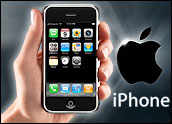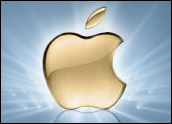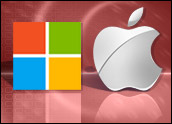
While Apple’s iPhone clearly is aimed squarely at the consumer market, that hasn’t stopped business users from coveting it as well — and putting it to work. Independent software vendors (ISVs) are jumping in, making integration solutions and applications that work with the iPhone.
NetSuite, for example, has launched an iPhone version of its software that allows users to access CRM (customer relationship management) applications, taking advantage of iPhone’s wide screen and Safari browser, and other ISVs like Synchronica are producing solutions that help integrate the iPhone with corporate Microsoft Exchange installations.
Is the iPhone poised to take on the Treos and BlackBerry devices of the world, or is it just a nifty toy adapted for only limited business use?
Key Components
Because Apple aimed the iPhone first at consumers, the company made it extraordinarily easy to use. It’s easy to sync; it’s easy to access personal e-mail; it’s easy to browse the Web. Plus, it has handy built-in calendar and contacts applications — also easily syncable with a personal PC or Mac — and a wicked-cool visual voicemail solution, all of which make the iPhone appear to have all the key core functions that most enterprise business customers are looking for: personal information management (PIM) tools.
However, Gartner, in a pair of research reports on the matter, flat-out says the iPhone “is not yet an enterprise mobile device,” noting that “the iPhone cannot be integrated in a fully managed and secure corporate environment.”
Still, Gartner realized that widespread end user adoption will raise the pressure on IT staff to fully support the iPhone. In fact, if a given IT group is forced to make an exception and support the iPhone, Gartner recommends that the IT staff place the device into a “concierge-level support” in order to deliver hands-on support … and then pass the cost for support on to the end user who requested it.
What’s Wrong With the iPhone?
For starters, the very reason that the iPhone is so easy to use and trouble-free for consumers is the same reason it’s not friendly to enterprises. Even though it runs a version of Mac OS X, the phone is locked down, so customers can’t install custom or third-party applications. Businesses can run Web-based applications, of course, but those are generally only marginally effective in a small form factor.
“Businesses that want to roll out mobile applications don’t necessarily want a Web-only approach. In many cases they need native access to the devices themselves and in many cases need to be able to integrate new applications with existing native applications — for example, to tie in a new app with, say, the phone’s contact list,” Tony Rizzo, a mobile software and device analyst for The 451 Group, told the E-Commerce Times.
“Symbian and Windows Mobile have to deal with allowing third party apps to run on the phone as clients. And they need to also be able to support huge numbers of different phones,” he added. “They have a much more challenging effort. Apple took the easy way out — no native third party apps on the iPhone. That makes it easy to do nifty things but leaves businesses out of the loop for developing real client-based apps.”
In addition, the iPhone only works with AT&T, so enterprise customers that have contracts with other mobile providers are highly unlikely to switch carriers just for the iPhone.
What About Web-Based Apps?
The Safari browser on the iPhone is astoundingly sharp and easy to use — for a mobile device, that is.
“Can you really look at, say, a dashboard or CRM contact list? The latter, yes,” Rizzo noted. “The former gets to be hard to view.”
Even so, it’s likely that ISVs will refine their Web-based applications to be leaner and easier to use on the iPhone — and future, similar mobile browsing devices, as well.
“The problem is, what you really want as an enterprise user is something that’s fully synchronized, so that if you read and delete or respond to an e-mail message for work, you want to see the response in your sent items log, and you want to see the things you delete actually deleted and not have to do it twice,” Golvin said. “What enterprise users want is a fully-integrated experience, and you don’t really get that with the iPhone.”
Because so many businesses use Microsoft Exchange for e-mail, easy and secure integration with Exchange is critical to widespread business adoption.
“I think the main impediment is the inability to synchronize with servers inside the firewall,” Charles Golvin, an analyst for Forrester, told the E-Commerce Times. “It can talk to Exchange servers, but only through the IMAP (Internet message access protocol) interface.”
IMAP, though, is a sticking point for most IT managers.
“Using IMAP to access corporate e-mail is inherently insecure,” Rizzo explained. “The sort of access that RIM’s BES (BlackBerry Enterprise Server) provides is a different beast altogether, and without that BES functionality, the iPhone will only be able to cater to fashion-conscious execs.
“Visto, Synchronica, Funambol — they can all provide an IMAP-based experience,” Rizzo added. “In the end that is a consumer play, not a business play.”
Lotus Notes and Domino can work via IMAP — if an IT department is willing to turn it on — but problems crop up again if users only access Domino via VPN (virtual private network). The iPhone has some VPN capabilities, but VPN setup and troubleshooting within corporate environments is difficult and prone to security vulnerabilities.
Speaking of Security
iPhone has another problem from the standpoint of enterprise technology security, Rob Enderle, principal analyst for the Enderle Group, told the E-Commerce Times. “It has a very high theft profile — it’s very desirable and [if hacked] it can be used without AT&T.”
So, yet another risk is exposure to corporate data if the iPhone were stolen. This isn’t much different than a laptop being stolen, except it’s a lot harder for a thief to quietly slip a laptop into a pocket. Plus, the iPhone is new and different, and security experts tend to shy away from unproven, untested technologies.
Elaborate Workarounds
Online discussion forums are packed with talk about workarounds. A common one is where an iPhone customer manages to sync a business calendar to another calendar, such as Google’s Calendar or an Outlook calendar, and then use third-party software to sync that calendar to Apple’s iCal on a personal Mac, which, of course, then syncs via iTunes to the iPhone.
From a business perspective, this kind of solution is ripe for error and outright failure. What happens when an iPhone user misses a meeting with a key business partner, customer or executive?
Will iPhone Unseat BlackBerry?
“RIM has nothing to worry about on the enterprise side. It has years of lead time on Apple in terms ofdelivering a serious business tool, as do Nokia and Motorola,” Rizzo said.
“True, RIM needs to seriously upgrade its Blackberry browser experience — say to the Ajax (asynchronous JavaScript and XML)-enabled Opera browser,” Rizzo conceded. “But I suspect that is likely to happen once it has an HSDPA (high-speed downlink packet access) version of its hardware out on Cingular networks.”
The Future
Given the hundreds of thousands of iPhones already sold, third-party software vendors will find ways to repackage their solutions for the iPhone and/or create new solutions altogether. Visto, for example, is claiming that its Visto Mobile for the iPhone solution will directly offer secure mobile access to both Exchange and Notes that “will alleviate IT concerns regarding security and reliability.”
The solution, however, won’t be shipping until late in the third quarter of this year.
“People who are absolutely devoted and committed to using the iPhone for their work stuff will find a way to do it — there are enough workarounds. But one of the main reasons why BlackBerry and other enterprise-based mail solutions have been readily taken up is that they work fairly seamlessly, and that’s not going to be how it is with the iPhone,” Golvin said.
“From Apple’s point of view, they have never been strong in the enterprise market,” he added. “They have never gone after it with fire in their belly, so I don’t think that’s a shortcoming. The iPhone is really designed to be a consumer product.”











































Social Media
See all Social Media